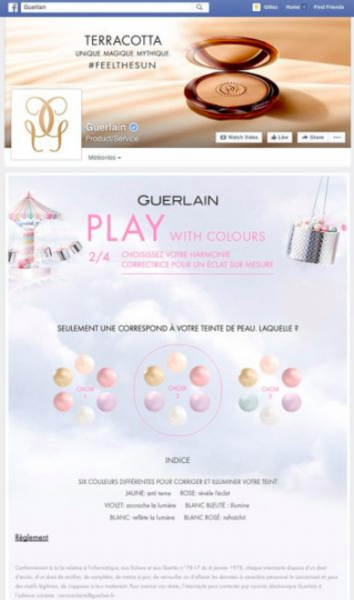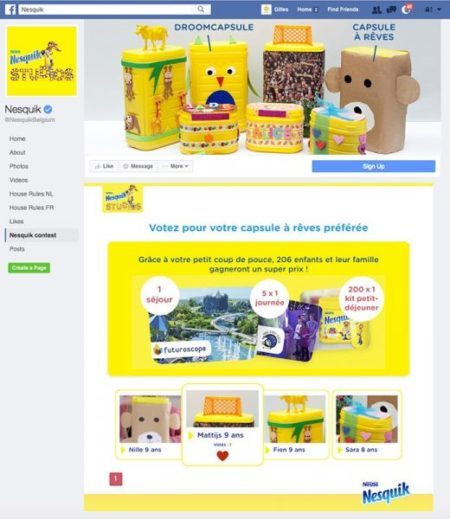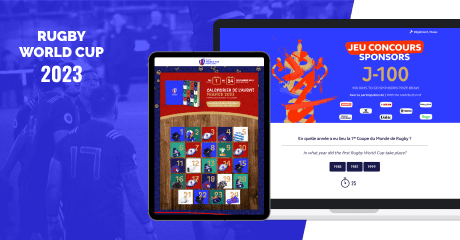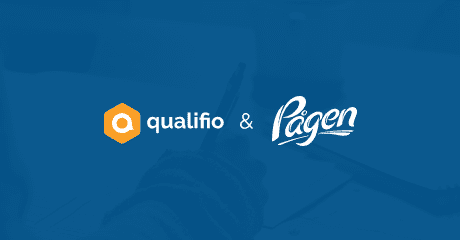8 content marketing rules to live by
Everyone is familiar with the adage ‘content is king‘, which is more relevant than ever today. Done consistently, content marketing can indeed help you achieve significant results in everything from creating leads (Neil Patel says it!) to driving website traffic, promoting your brand or even educating customers and prospects.
Ready to rock content marketing in 2018? Below are 8 golden rules that we have identified to help you optimise your content marketing.
1. Make your content unique, relevant and stay true to your brand
The whole idea behind content marketing is to provide your audience with beneficial content, often in different forms, in order to generate traffic, gain in notoriety, or build loyalty. It’s part of long-term strategy – whose primary objective isn’t to promote your products or services but rather to position your company as an expert on the market. The first rule is thus to create high-quality content that is useful and above all in touch with your target’s concerns.
You must be able to answer the following questions: what’s your audience really interested in? What are its objectives? How could you make their lives a little bit nicer? How to inspire them? To find out, you should collect data about your prospects and customers. These data, combined with the use of a CRM or DMP, let you create segments and customize your communications. To collect data, a simple trick: interactive marketing campaigns. Quizzes, surveys, personality tests, forms all help you qualify the participants while creating virality.
2. Make your content channel-specific
This second rule is crucial: use an adapted format that takes into account the channel on which the content will be published.
- A blog article can be further developed and include various thematic aspects. You can use an article to position yourself with keywords that your target group actually searches for and to increase your SEO score.
- Content for Facebook should be simpler and more visual in order to draw users’ attention. If you’re looking to get a lot of shares on social media, video is the number one format on Facebook. Infographics are very popular as well. Facebook is also ideal to engage with your audience. Interactive formats such as quizzes, personality tests, polls… can be very effective too. You could, for instance, create a prize competition to make your contents more playful:
- Same for Twitter, where brevity is required. Your tweets can be used to share content originally published on another channel, simply by adding a link. Emojis are always a plus 😉
- Content intended for LinkedIn needs to be more professional – leaving less room for fun, quirky contents. If you’re in B2B marketing, it also provides an opportunity to demonstrate leadership.
Having a variety of formats is also needed if you are to get different contents that keeps attracting new users.
3. Optimize content for mobile
Across the globe, mobile devices now dominate total minutes spent online. It is therefore necessary to adapt your content to ensure that all users can access and read it, whether they are using their smartphone, tablet or desktop. Accordingly, systematic tests must be performed before publication – on pain of losing part of your audience. Furthermore, content that is suitable for mobile will help your SEO, as Google rewards responsiveness.
4. Interact with your audience
It’s important to boost your blog and build your audience’s engagement. Making your content more interactive has many advantages:
- Formats such as quizzes, surveys and tests help collect critical data on your audience. These data could then be used to create segments and personalize communications flows in order to increase conversions.
- By asking questions to your audience (e.g. through a quiz or a survey), you can educate them about your products or services. For instance, with a contest “What’s the name of our newest product?”
- Interactive formats can prove compelling enough for users to click. In any case, your audience will spend more time on your website, which will increase the chances of conversion.
One effective solution is user-generated content (UGC), which is more reliable in the perception of your audience, and thus useful to build a relationship of trust with them. This format also reinforces the sense of community by encouraging interactions between participants. Photo contests provide a good example in this regard: the audience votes for the best picture submitted by their peers.
5. Optimize your content for SEO
SEO and content marketing fit together. Keywords included in your qualitative content must be relevant to your users but also to search engines. Your website will be indexed by Google and it will improve your ranking. Tools such as Google AdWords’ Keyword Planner can help you find appropriate keywords.
Thus, the length of your content is an important ingredient for Google. However, note that you should always create substantive, informative and detailed content that will capture the reader’s interest – under threat of being ignored (or worse) by Google.
Including links to other websites also improves your ranking. Another recommendation would be to get third party websites to include links to yours. Even better if the party in question is recognized in your field; it will send qualitative traffic to your pages.
And finally, you must provide an enhanced user experience (UX), including by providing accurate meta tags. Creating a cleverly structured sitemap will help Google index your pages in the best possible way.
6. Create calls to action
To formalise the relationship between your content and prospects, it is necessary to use one or to call(s) to action. These should be in line with the purpose of your content in order to direct the reader. For instance, a “Request a demo” or “Free trial period” button if you want them to try your product. If it’s virality you’re looking for, then a social sharing button should do the trick.
Do not overload your content with calls to action though. Just focus on where you really want to bring the readers.
7. Look at the metrics
It is important to identify and assess your KPIs to measure the performance of your campaign. A number of questions arise:
- Did your content reach your target? Number of page views, unique visitors, new followers… If it’s an email, the open and click rates may be worthy of analysis.
- Did you get a lot of engagement? Average time spent on your page, number of page view per user, number of comments and shares, etc.
- Did users convert? E.g. number of new subscribers or content downloads. Don’t forget the potential revenue based on incoming new leads.
Obviously, your KPIs should be selected in accordance with your objectives (conversions, engagement rates…) to avoid time being wasted with indicators that are meaningless to you.
8. Quality is more important than quantity
Taking longer to produce less is a wise choice. A high-quality content will not only be good for your SEO but will also be more widely shared and its longevity will rise. Eventually, this will all result in a traffic increase.
When it comes to content creation, be creative. Outstanding formats will probably take longer, but will attract more engagement. Qualifio has more than 40 different campaign types; it’s up to you to use various formats that meet your needs. Once again, when you create content, think of what might interest your audience.










